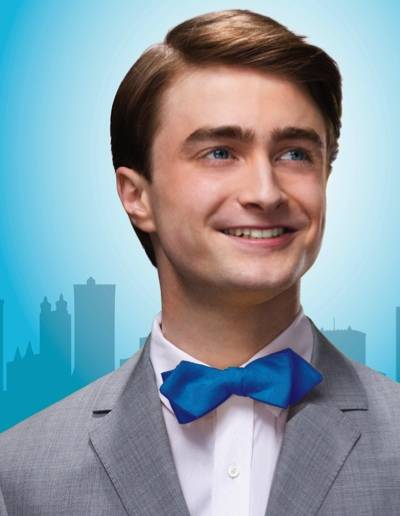Eds. note: Smile Politely does not normally publish on Saturdays, but we thought we would go ahead and give you this theatre review before, you know, the play was already over.
—
We have a talented community and an over-abundance of entertainment options for any given weekend. This is why Smile Politely exists. In all things theatrical alone, we have The Krannert Center, the Armory-Free Theatre, Parkland College, the Station Theatre, Champaign-Urbana Theatre Company, various high school and jr. high theatrical events, and the random community productions in clubs, bars, etc. No one seeking entertainment should be left wanting on any given weekend. It’s a miracle, of sorts, that we even have actors, dancers, singers, technical staff, directors, and musicians to staff all of these various venues, plus all of the other entertainment options of different genres. Added to this is the fact that most of these talents are volunteers, which is a continuous source of awe to me. When I teach drama, one of my main goals is for my students to see the effort needed to mount even the simplest of productions. The task is Herculean.
I was at a party recently when I was struck by how much we must love to do it. An esteemed local director and friend briefly recounted an awful day to me that culminated in a crying jag in her office. “Everything just got to me,” she confided. She was referring to her real world job and the theatrical responsibilities she was currently navigating. “I did the same thing during How I Learned to Drive,” was my response. Now, before you jump to the conclusion that I was afraid the show would suck, I need to make clear that never during that experience did I think my superb cast was unable to produce quality work. The reason I started sobbing in the bathroom of a near-empty theatre was because I was worried I was letting them down, that the balls a director must juggle to honor the voluntary efforts of his or her cast and crew were about to fall, and it would be my fault.

This weekend, The Champaign-Urbana Theatre Company began their 22nd season with a production of the classic musical, How to Succeed in Business without Really Trying. The musical originally opened on Broadway with music and lyrics by Frank Loesser and book by Abe Burrows, Jack Weinstock, and Willie Gilbert, based on Shepherd Mead’s 1952 book How to Succeed in Business Without Really Trying: The Dastard’s Guide to Fame and Fortune. The story concerns young, ambitious J. Pierrepont Finch who, with the help of the book How to Succeed in Business Without Really Trying, rises from window washer to chairman of the board of the World Wide Wicket Company. The musical, starring Mad Men’s Robert Morse and Rudy Vallee, opened at the 46th Street Theatre on Broadway in October 1961, running for 1,417 performances. The show won seven Tony Awards, the New York Drama Critics Circle award, and the 1962 Pulitzer Prize for Drama. In 1967, a film based on the musical was released by United Artists, with many of the original cast recreating their roles. A 1995 revival, starring Matthew Broderick and Will and Grace’s Megan Mullally, was mounted at the same theatre as the original production (now named the Richard Rodgers Theatre). It ran for 548 performances. Then, a 50th anniversary Broadway revival, directed and choreographed by Rob Ashford and starring Daniel Radcliffe and John Larroquette, opened on March 27, 2011, at the Al Hirschfeld Theatre, and ran for 473 performances. As a kid, the Robert Morse performance in the 1967 musical was one of my favorite things to watch. He was my super-hero and I owe my love of theatre largely to his performance.
The CUTC production began with a welcome speech from director and Interim Company Manager, Amy Stoch. This has become a recent trend in several companies. To all those who exist currently, or ever hope to form in the future, I offer this heart-felt directive: For the love of God, STOP IT! The welcome speech does nothing to fix a weak show and does nothing but stifle the electric momentum and anticipation of the audience for those first moments of a performance when the initial strong blasts from an orchestra shatter the hushed theatre’s awe-filled silence. It’s disappointing and distracting to get an anemic, golly-gee-we-worked-so-hard-hope-you-like-it parental lecture. It’s a real buzzkill, and I have only enjoyed one such speech. It was the opening night of a comedy presented at a dinner theatre and the drunken female director stumbled out on stage wearing a startling fuchsia and orange hibiscus-print caftan, mumbled something about the joy and tears of art and the theatre — done with grand enunciation, which is quite a feat when you’re hammered — shouted, “ENJOY! ENJOY! ENJOY!” with outstretched arms, and then proceeded to face-plant in the first row of tables. Her caftan billowed over her head, revealing her matching ruffly fuchsia panties. THAT was a speech and a moment of theatre worthy of inclusion! As for the rest of you, you aren’t drunk, you’re not wearing a caftan, and you need to sit down and shut up already! THANK YOU!
 This production has an extremely talented cast doing their best to make this show special and memorable. The lead actor, Matthew Fear, is cast against type, a daunting task for most actors. Those familiar with Robert Morse or Harry Potter, er, I mean, Daniel Radcliffe, expect a slight and wiry actor in the role of Finch. Mr. Fear is physically more imposing and not as Puck-like as these actors. He does have the sort of eager innocence masking the killer ambition needed for the role, and he is likeable and amusing throughout, with a solid singing voice.
This production has an extremely talented cast doing their best to make this show special and memorable. The lead actor, Matthew Fear, is cast against type, a daunting task for most actors. Those familiar with Robert Morse or Harry Potter, er, I mean, Daniel Radcliffe, expect a slight and wiry actor in the role of Finch. Mr. Fear is physically more imposing and not as Puck-like as these actors. He does have the sort of eager innocence masking the killer ambition needed for the role, and he is likeable and amusing throughout, with a solid singing voice.
Likewise, Liz Martin has a nice open quality that makes her a logical casting choice for the role of Rosemary. Her wide-eyed expression translates well to the 1960s period of the piece, and she has some nice comic sparring with the equally well-cast Jenny Gleason, as the femme fatale corporate mistress, Hedy LaRue.
My one quibble in the two principles’ performances is a lack of romantic chemistry between the two characters. They are a pleasant enough couple, but due to the script’s failure to decide if it’s a play about ambition or a romantic comedy, their romantic interactions come out of nowhere and are given little ground on which to develop their relationship before our eyes. It is a significant weakness of the piece, not the actors, and a good director could help them navigate through the gossamer-thin plot points that lead to their romance in the conclusion of the piece.
There is ample support from the rest of the company to make this a lovely evening of theatre. AJ Curry has a clear and comedic performance as the corporate secretary that Finch needs to navigate around on his way to the top. The corporate gentlemen, specifically, John Tilford, Jim Dieker, David Laker, and the smarmy Ray Essick are good support to Fear, and their scenes are some of the strongest moments of this production. And, as a chorus boy businessman, Michael Prosise almost steals the show whenever he’s on stage, especially when he’s dressed as a randy pirate with satin pantaloons.
The secretarial pool, led by the very funny Jamie Hines, is also animated and engaged throughout the proceedings. The remainder of the company ranges from very solid to trying hard, and the combined effect is a very competent community theatre cast. With a cast like this, the show should be delightful.
Production-wise, this show has many assets. The choreography of Whitney Havice is clever and creative, masking the fact that many of these cast members are not gifted dancers. What made the recent revival so successful was the choreography of Rob Ashford, so current audiences may come expecting a dance-driven show. Havice does some lovely things with the ensemble, defining both character and comic timing in numbers like the zombie-inspired, “Coffee Break” and the show’s Finale. Her efforts show what a strong ensemble this production could have with the right direction, and when these actors are dancing they are 100% engaged.
Musically, the production sounds good. That’s sort of a given for a CUTC show. Hours are spent on songs and dances and then the acting just sort of happens, or doesn’t, depending on the cast and director. The musical direction of Andrew Hudson is very competent, and he gets some lovely singing from his leads and the group as a whole. The orchestra takes a few moments to warm up, but quickly lends ample support to the production.
The costumes are convincing, courtesy of Maureen P. Tweedy, despite a limited budget. Some are more flattering than others because the fit is a crucial issue in stage-wear, which should be monitored more closely in the future, but the colorful costumes do enliven the space and define the characters.
 That’s what’s good about this show, which is considerable. So why did I find it tedious and lacking? The answers are a creaking script, an ill-conceived set, and some sloppy and haphazard direction. A modern audience has little patience with a production running 3+ hours. Part of this is due to the dinosaur-like quality of this dusty musical. It lumbers through tuneless recitatives and makes you wait for a good forty minutes for the first memorable tune. It drowns you in words and voice-overs and set changes that squeeze the life out of any production that isn’t on speed. This is not the participants’ fault, but the company who selected it. The standard wisdom is that classics are seen as cash-cows, which are safe and require little thought or effort. Plus, no one complains, and it’s “family-friendly” (Weirdly, misogyny and homophobia or heterosexist exclusivity are always considered “family-friendly.” Who knew?). When choosing an older show, a company needs to evaluate the relevance of the material for a contemporary audience or to see if the director’s concept will create a new focus worthy of seeing. Name recognition is good, but when the piece seems dull and clunky on the page, it will rarely come to life on the stage, so CUTC needs to rethink their show selection process a bit here.
That’s what’s good about this show, which is considerable. So why did I find it tedious and lacking? The answers are a creaking script, an ill-conceived set, and some sloppy and haphazard direction. A modern audience has little patience with a production running 3+ hours. Part of this is due to the dinosaur-like quality of this dusty musical. It lumbers through tuneless recitatives and makes you wait for a good forty minutes for the first memorable tune. It drowns you in words and voice-overs and set changes that squeeze the life out of any production that isn’t on speed. This is not the participants’ fault, but the company who selected it. The standard wisdom is that classics are seen as cash-cows, which are safe and require little thought or effort. Plus, no one complains, and it’s “family-friendly” (Weirdly, misogyny and homophobia or heterosexist exclusivity are always considered “family-friendly.” Who knew?). When choosing an older show, a company needs to evaluate the relevance of the material for a contemporary audience or to see if the director’s concept will create a new focus worthy of seeing. Name recognition is good, but when the piece seems dull and clunky on the page, it will rarely come to life on the stage, so CUTC needs to rethink their show selection process a bit here.
To make this show move briskly along, the director must make the actors move in and out effortlessly, and the scenic designer needs to facilitate this with a set that moves. For the first few moments of the set appearing, I had high hopes that Bernie Wolff’s design would address the needs of a contemporary audience for movement and swiftness. The sliding panels seem very utilitarian and the background ladders offer a nice conceptual feel in the opening moments of the piece. Then it starts moving and the panels never really get placed precisely, and the ladders never go away, and thus seem oddly distinct from the more realistic panels and set pieces. Things drop from the fly space, then furniture and plants and small woodland creatures appear, and thirty minutes are drained from the audience’s patience.
This production needed to be simplified, and it needed direction. It needed a concept and a coherent vision. For the most part, Ms. Stoch’s direction seemed random and disjointed at best. The set concept must rest on her because a production staff does whatever they are asked by the director. The awkward entrances and exits for each scene are not smoothly shaped or given motivation, other than the actors are asked to move from point A to point B, and it comes across as such. The crowd scenes are not crisply staged to make the most of this cast’s energy and talent. There are moments when the actors are in a scene together and the piece chugs along, but it’s followed by moments when they are left to guess why they are on stage. This cast clearly takes direction when it’s given, and they deserve better for their efforts, as does the audience.
—
CUTC’s production of How to Succeed at Business Without Really Trying plays through this weekend. See CUTC’s website for schedule details and tickets.








